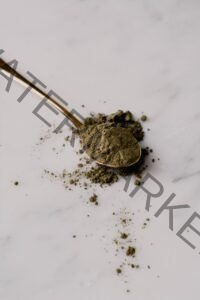
How Long Do Mushrooms Stay in Your System?
13 June 2023
Mushrooms, a type of fungi, have been consumed by humans for their culinary and medicinal benefits for centuries. However, there are also certain species of mushrooms, such as psilocybin mushrooms, that are consumed for their psychedelic effects.
When it comes to psychedelic mushrooms, one common question arises: How long do mushrooms stay in your system? Understanding the duration of their presence in the body is essential for various reasons, including drug testing, therapeutic applications, and overall well-being. In this blog post, we will delve into the factors that influence the duration of mushrooms in your system, explore the metabolism of psilocybin, and discuss the tests used to detect mushrooms in the body.
Factors Affecting Mushroom Elimination
When it comes to how long mushrooms stay in your system, several factors come into play (Dinis-Oliveira, 2017). It’s important to note that the elimination process can vary among individuals due to differences in metabolism and other factors. Let’s explore the key factors that influence the presence of mushrooms in your system:

Dosage and Potency
The quantity and potency of mushrooms ingested have a significant impact on their duration in your system. Higher doses generally lead to longer-lasting effects and a prolonged presence of psilocybin metabolites in the body. The more mushrooms you consume, the longer it will take for your body to eliminate them.

Metabolism
Metabolism plays a critical role in determining how long psilocybin remains in your system. The rate at which your body metabolises psilocybin affects its elimination. Factors such as age, overall health, liver function, and individual metabolic rate can all influence the speed at which mushrooms are eliminated. Individuals with faster metabolism may eliminate psilocybin more quickly than those with slower metabolism.
Route of Administration
The method of consuming mushrooms also affects their elimination time. When mushrooms are consumed orally, psilocybin is absorbed by the gastrointestinal tract, metabolised in the liver, and then distributed throughout the body. This process takes time and can impact how long mushrooms stay in your system.
In contrast, alternative routes of administration, such as inhalation or injection, may have different absorption rates and elimination patterns, potentially altering the duration of their presence.

Frequency of Use
Regular users of mushrooms may experience a higher level of psilocybin metabolites in their system due to continuous exposure. With repeated use, these compounds can accumulate in the body, leading to an extended elimination time. The more frequently you consume mushrooms, the longer it may take for your system to eliminate them completely.
It’s important to note that while these factors provide general insights into the duration of mushrooms in your system, individual variations can significantly influence the actual timeframe. Factors such as body composition, overall health, and genetic differences can impact how long mushrooms stay in your system.
The length of time mushrooms stay in your system depends on factors such as dosage, potency, metabolism, route of administration, and frequency of use. Understanding these factors can be crucial for various reasons, including drug testing, therapeutic monitoring, and overall well-being. If you have concerns about mushrooms’ presence in your system, it’s always advisable to consult with a healthcare professional or an expert in the field for personalised guidance.
Metabolism of Psilocybin
When it comes to determining how long mushrooms stay in your system, various methods are employed for detecting their presence or the presence of their metabolites in the body. These detection methods are essential for purposes such as workplace drug testing, legal matters, and therapeutic monitoring. The most common methods used for detecting mushrooms include urine tests, blood tests, and hair tests.

Urine Tests
Among the different methods, urine tests are the most frequently employed for detecting recent mushroom use. The metabolites of psilocin, the active compound in mushrooms, can be detected in urine shortly after ingestion and typically remain detectable for approximately 24-48 hours. However, it’s important to note that with heavy or chronic mushroom use, the metabolites may be detectable for an extended period beyond the usual timeframe.
Blood Tests
While blood tests can determine the presence of psilocin and its metabolites in the bloodstream, they are less commonly used for detecting mushrooms compared to urine tests. This is primarily due to the shorter detection window associated with blood tests. Psilocin can usually be detected in the blood within 1-2 hours after ingestion and remains detectable for approximately 24 hours (“Psilocybin,” 2016).

Hair Tests
Hair tests offer a longer detection window, making them useful for detecting drug use over an extended period. However, hair tests are less commonly utilised specifically for detecting mushrooms, as psilocin and its metabolites are less likely to accumulate in hair compared to other drugs. Hair tests are more commonly employed for detecting substances that tend to accumulate and persist in hair follicles over time.
It’s important to note that the detection periods mentioned above are general estimations and can vary depending on several factors, including the individual’s metabolism, frequency of use, and other physiological variables. Additionally, advancements in drug testing methodologies may affect the detection windows for mushrooms and their metabolites in the future.
Detecting the presence of mushrooms or their metabolites in the body can be crucial for various reasons, such as drug testing, legal matters, or therapeutic monitoring. Urine tests are the most commonly used method for detecting recent mushroom use, while blood tests and hair tests offer alternative options with different detection windows. However, it’s important to consider individual variations and consult with professionals in the relevant fields for accurate and up-to-date information regarding the detection of mushrooms in your system.
Conclusion
The duration mushrooms stay in your system depends on several factors, including dosage, metabolism, route of administration, and frequency of use. While the effects of psilocybin mushrooms may last several hours, the presence of their metabolites can be detected for a shorter period through urine and blood tests.
It is worth noting that the information provided here is general, and individual variations can significantly influence the duration of mushroom presence in the system. If you have concerns about drug testing or other related matters, it’s always best to consult a healthcare professional or an expert in the field.


